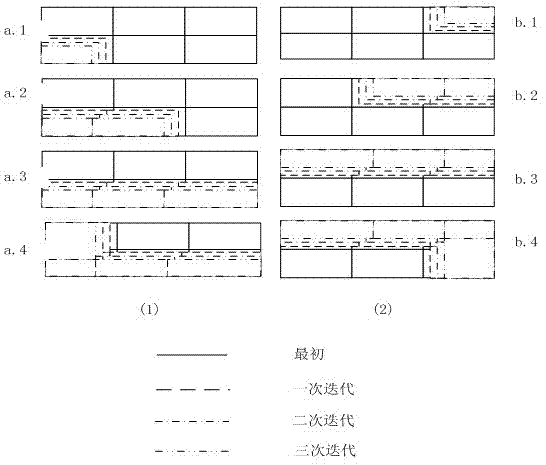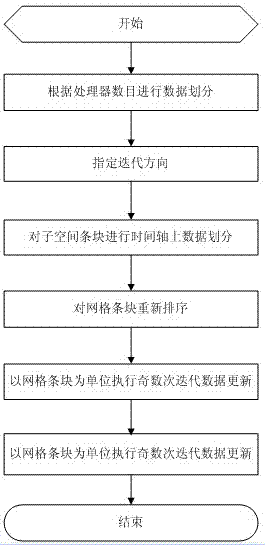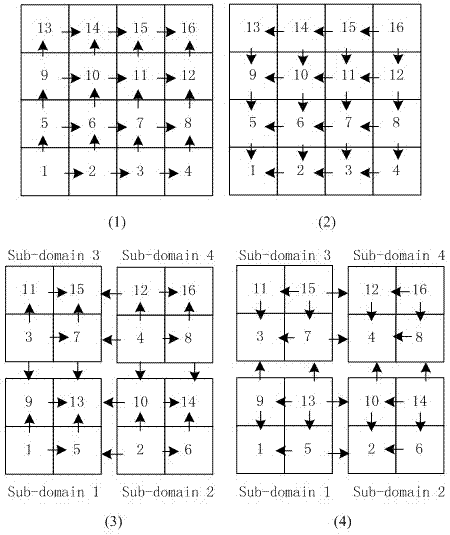Finite difference stencil parallelizing method based on iteration space sticks
A block and iterative technology, applied in the field of parallel finite difference templates, can solve problems such as hindering the parallelization of loops, and achieve the effect of improving data locality, reducing cache miss rate, and improving data locality
- Summary
- Abstract
- Description
- Claims
- Application Information
AI Technical Summary
Problems solved by technology
Method used
Image
Examples
Embodiment Construction
[0033] Below in conjunction with accompanying drawing and embodiment, specific embodiment of the present invention is described in further detail:
[0034] The traditional iterative method executes the sequence process as follows:
[0035] In one iteration, according to the order of the grid points, iteratively update all the grid points in turn:
[0036] for ( t=1; t<=T; t++ )
[0037] for ( i=1; i
[0038] for ( j=1; j
[0039] A[t+1][i][j]=(A[t+1][i-1][j]+A[t][i+1][j]+A[t][i][ j] + A[t+1][i][j-1] + A[t][i][j+1]) / 5
[0040] where T represents the number of iterations and N×N represents the size of the matrix.
[0041] In the above method, there are four ways of data reuse:
[0042] In the row-first storage format, A[i][j], A[i][j+1]...
[0043] In the j cycle, A[i][j] is reused in the process of updating A[i][j-1], A[i][j] and A[i][j+1].
[0044] In the i cycle, A[i][j] is reused in the process of updating A[i-1][j], A[i][j] and A[i+1][j].
[0...
PUM
 Login to View More
Login to View More Abstract
Description
Claims
Application Information
 Login to View More
Login to View More - R&D
- Intellectual Property
- Life Sciences
- Materials
- Tech Scout
- Unparalleled Data Quality
- Higher Quality Content
- 60% Fewer Hallucinations
Browse by: Latest US Patents, China's latest patents, Technical Efficacy Thesaurus, Application Domain, Technology Topic, Popular Technical Reports.
© 2025 PatSnap. All rights reserved.Legal|Privacy policy|Modern Slavery Act Transparency Statement|Sitemap|About US| Contact US: help@patsnap.com



